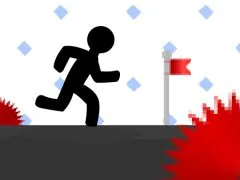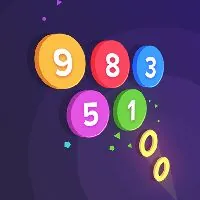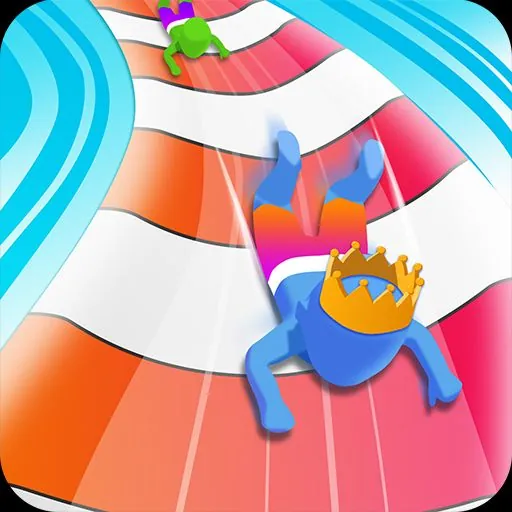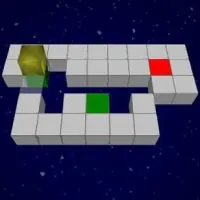NAIL STACK
SIMILAR GAMES
Description
Nail Stack - GitLab Games
About Nail Stack - GitLab Games
We proudly present a comprehensive exploration of Nail Stack, a captivating game developed and hosted by GitLab Games. This article delves deep into the core mechanics, gameplay intricacies, and overall user experience of this engaging title. Our intention is to provide an in-depth review and analysis, providing you with the insights necessary to appreciate the nuances of Nail Stack. We explore the game’s objective, its challenges, and the strategies players employ to achieve high scores and mastery.
Gameplay Mechanics of Nail Stack
At its heart, Nail Stack is a game built on precision and timing. The fundamental objective involves stacking nails, one atop another, to build the tallest possible tower. The game’s elegance lies in its simplicity, making it accessible to a broad audience while still offering a significant degree of challenge. Each nail, when launched, must be perfectly aligned with the nail below. Even a slight misalignment results in a reduction of the stack’s stability, and ultimately, the game ends when a nail falls.
The core mechanics revolve around a user interface that responds intuitively. Players typically interact through tapping or clicking to drop each nail at the precise moment. Mastering the timing is crucial; anticipating the nail's movement and adjusting the click timing accordingly is essential. The game's difficulty ramps up progressively, with each successful stack contributing to a higher score and, consequently, increasing the speed and complexity of subsequent nail placements. The margin for error decreases dramatically as the stack grows taller, requiring unwavering focus and reflexes.
Precision and Timing: The Pillars of Success
The key to success in Nail Stack centers on the ability to develop an acute sense of timing and precision. Players must learn to predict the nail's trajectory accurately, accounting for the game’s variables and applying perfect timing to achieve perfect stacks. This involves a continuous cycle of observation, prediction, and reaction. Consistent practice is crucial for improving these skills and boosting scores. The physics engine, while straightforward, contributes to the unpredictable nature of each nail's movement, making this a central element for gameplay.
The Role of Game Speed
As the stack grows, the nails begin to fall at a faster rate. Players will notice the nails move from a slow pace, to one that requires more and more quick actions. The increased speed adds another layer of complexity and pressure. The difficulty increases dramatically and the ability to maintain focus under pressure is tested. This continuous escalation ensures that the gameplay remains stimulating and challenging, providing a satisfying sense of accomplishment.
User Interface and Experience
The user interface (UI) of Nail Stack is designed for simplicity, ensuring ease of navigation. The game offers a clean and uncluttered visual environment, allowing players to focus on the core mechanics. This minimalist design ensures that the player’s attention remains fixed on the task at hand: stacking nails with precision and skill. The layout generally comprises a central area for gameplay, displaying the growing nail stack, accompanied by score metrics, or buttons that control the start of the game.
Visual and Auditory Design
The visual presentation of the game is intentionally clean, with the primary emphasis on the nails and the stack. The color palette is typically simple, reducing distractions. Sound effects, if implemented, are designed to complement the action, such as a 'clink' sound for each successful nail stack. The audio-visual elements work in harmony to create a gameplay experience that's both engaging and easy to follow. It provides valuable feedback that signals success and signals mistakes quickly.
Accessibility Features
GitLab Games typically designs its titles with accessibility in mind. Features such as customizable controls or visual aids might be present to accommodate a diverse player base. The goal is often to create a game that is intuitive and enjoyable for everyone, regardless of their experience level. Ensuring these features allows the player to customize the experience to match the individual requirements. This is always a primary goal for modern game development.
Strategies for Mastering Nail Stack
While Nail Stack may seem straightforward, successful gameplay requires strategic thinking. Players must evolve from the basic mechanics to implementing advanced techniques, leading to continuous improvement in scores and overall skill. Several approaches can be employed to maximize performance.
Developing a Consistent Rhythm
One of the foundational strategies involves finding a consistent rhythm. The goal is to anticipate each nail's movement and tap accordingly. This rhythm can become a predictable timing loop for placing the nails. Practicing consistently until a consistent pattern of tapping emerges, can lead to a much better performance.
Focus and Concentration
Nail Stack demands a high degree of focus. Maintaining concentration can often be difficult. The player must find their individual method for staying focused on the gameplay, whether it is through quiet surroundings, or by keeping their mind focused on the immediate task. Any distraction, even for a fraction of a second, can result in a missed tap and the end of the game.
Adaptability and Reaction Time
As the game speed increases, players need to adapt their strategies. This means adjusting the rhythm to accommodate the faster nail movement. Improving reaction time is critical for achieving high scores, and players will notice improvements as they play more.
Analyzing the Scoring System
The scoring system in Nail Stack is fundamental to the gameplay. The scoring design motivates players to strive for higher scores and promotes engagement over the long term. Understanding the nuances of how points are awarded and how the score is tracked, can help any player.
Progressive Scoring and Multipliers
The scoring system frequently includes elements that increase the score, in line with the user’s performance. Players earn points with each nail successfully stacked, and as the tower grows, the point accrual rate may increase. In some implementations, there may be bonus points. These elements add excitement and encourage sustained play.
Leaderboards and Competitive Elements
Many versions of Nail Stack incorporate leaderboards, and may encourage a competitive environment. These features enable players to compare their scores with other players. Competition fuels engagement, motivating players to improve their skills and strive for higher rankings. The goal is to enhance gameplay, encouraging players to develop skills, with the prospect of achieving high scores.
Comparison with Other Games
Nail Stack fits into the broader category of arcade games, known for their simple mechanics. Its simplicity makes it comparable to other well-known titles in this genre. It also highlights the game’s unique aspects, and explains why Nail Stack resonates with its audience.
Similarities and Differences
The game’s core mechanic of stacking bears similarities to other games. However, the distinct physics and the focus on precision set Nail Stack apart. Its success lies in its simple execution of the core gameplay loop. The minimalist design and immediate feedback contribute to its appeal.
The Appeal of Simplicity
The attraction of Nail Stack, like that of other successful games, lies in its simplicity. It is easy to pick up and play, but difficult to master. This balance ensures that players remain engaged over extended periods. This creates an environment where the game is not only easy to pick up, but also difficult to master. This ensures players have a reason to keep playing.
The Future of Nail Stack
As GitLab Games continues to develop and innovate, the future of Nail Stack may involve updates or new features. Understanding the potential of where the game might go, can bring exciting possibilities.
Potential Updates and New Features
The developers might release updates that include new modes, challenges, or gameplay twists. These updates could introduce new elements or enhance the user experience, increasing engagement, or introducing completely new mechanics. The objective is to keep the game fresh, and to retain the game’s audience over time.
The Role of Community Feedback
The developers often incorporate feedback from the player community. This includes ideas for new features and improvements. The community is at the heart of any game, and the developers can always improve the gameplay through listening to and using this valuable feedback.
Conclusion
Nail Stack offers an engaging and addictive experience, showcasing the ability of GitLab Games to create an enjoyable title. The game’s mechanics, combined with its user-friendly interface and strategic depth, make it a standout in the arcade genre. Whether you are a casual player or a seasoned gamer, Nail Stack provides hours of entertainment.
The simple yet challenging gameplay, coupled with a rewarding scoring system, ensures that players will return again and again. For anyone looking for a fun and accessible game, Nail Stack represents an excellent choice. Visit GitLab Games to experience the joy of stacking nails and see how high you can climb the leaderboard.
Play Nail Stack for free on GitLab Games, where we offer a dynamic platform featuring thousands of the best unblocked games online. Our extensive library ensures pure enjoyment with an ad-free experience, keeping you immersed in the action without distractions. Accessible from school, work, or home, our Gitlab games deliver seamless fun anywhere you are. We’ve streamlined the experience—play effortlessly with your keyboard or a simple click, tailored to how you like to game. Dive into our collection of unblocked games, including popular categories like unblocked games 66, unblocked games wtf and cool math games Gitlab, and enjoy entertainment that’s always within reach and endlessly captivating.
















































